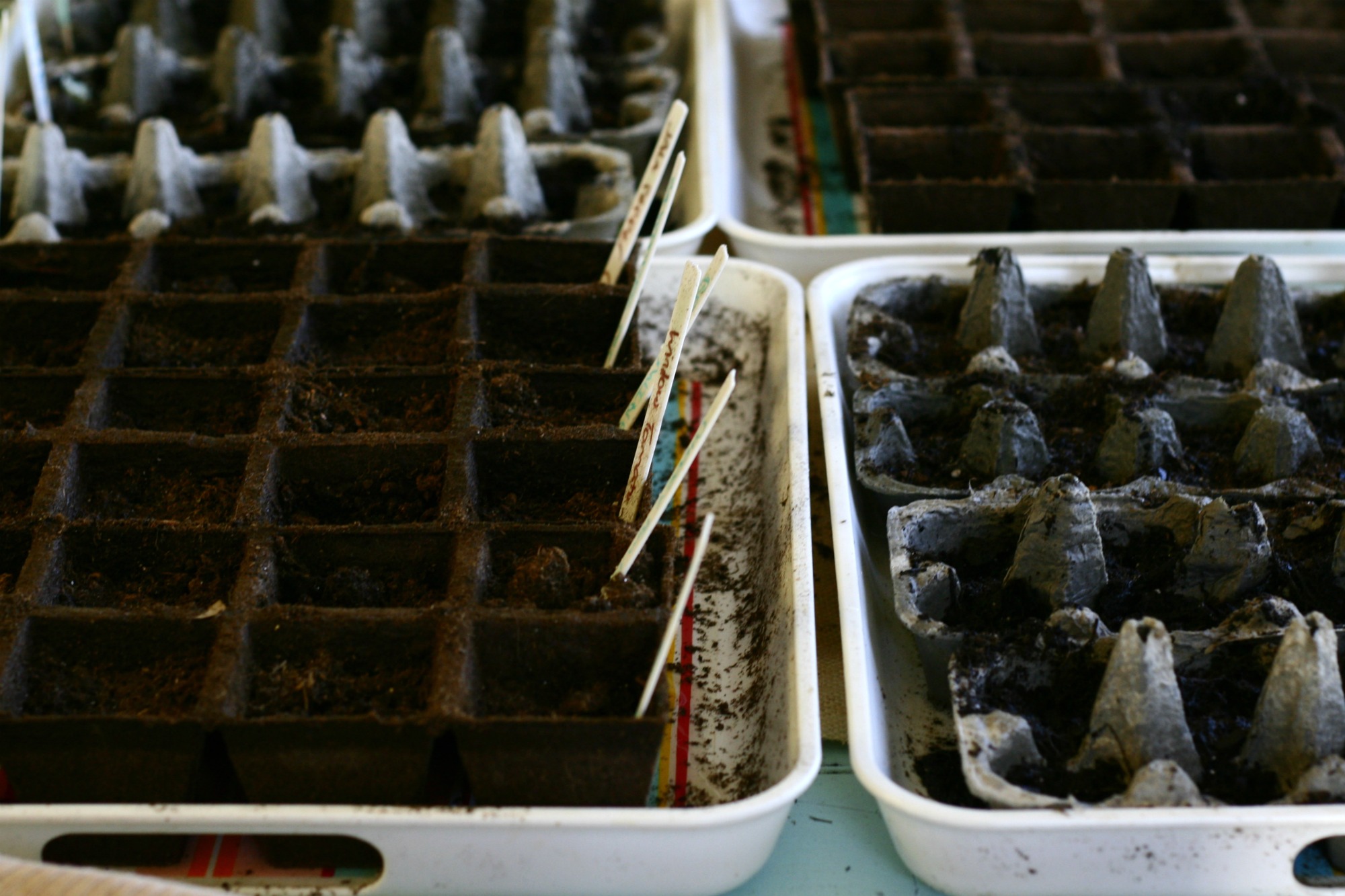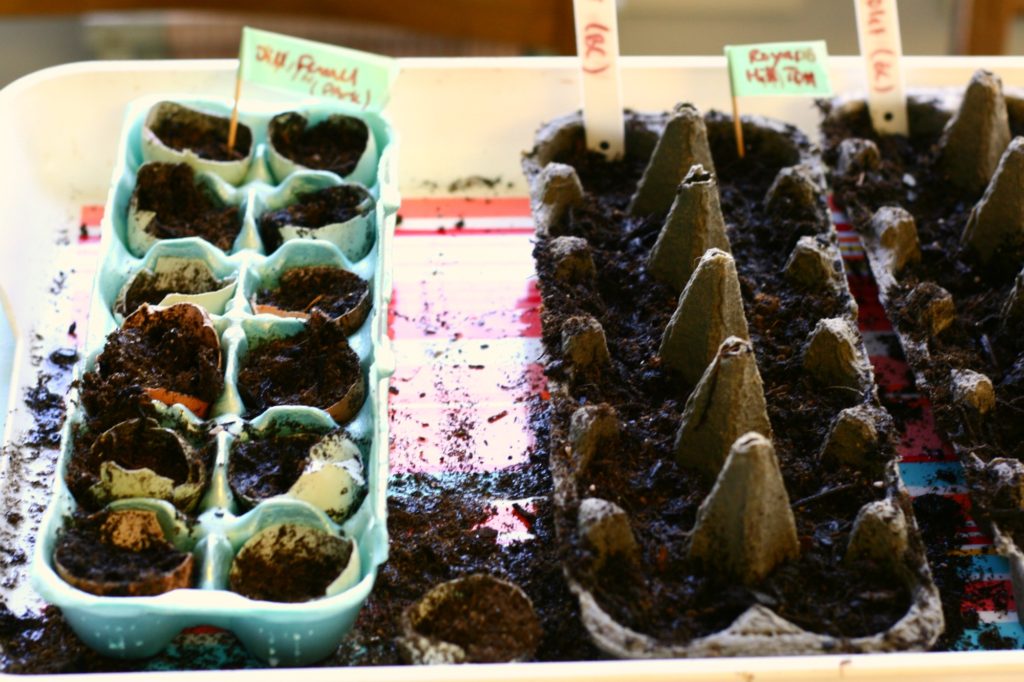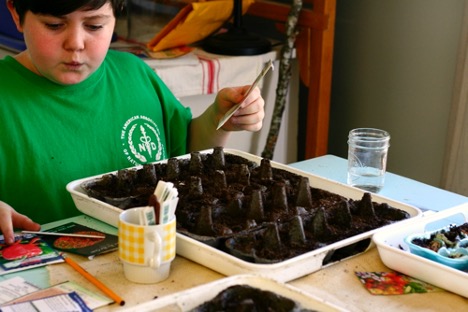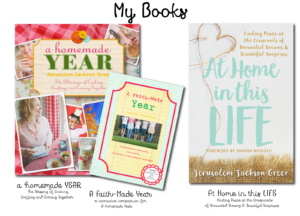
Four years ago, if you had told me that come late winter, I would begin to crave the feeling of dirt between my fingers, I would have declared you off your rocker. Gardening was never my thing. It was Nathan’s thing, my mother’s thing, my mother-in-law’s thing, my aunt’s thing, my Paw’s thing, but not my thing. I was firmly a house person. An inside person. A decorating sort. Not a gardener. But then everything fell apart, and I had to learn to dig into the life I had, putting down roots – actual and metaphorical. And that is when I first began to dig in the dirt. But it was out of obedience and not out of love or desire. The relationship between me and the earth beneath my feet began more like an arranged marriage than a Vegas wedding. It began with a sense of duty, not passion.
It would take a few more years of digging and planting and tending and reaping for my obligation to turn to want.
Which is precisely what is happening this year. Starting in early March, my body and soul began to crave soil and seeds and water and harvest.
I am currently taking an online course from a seminary on Liturgics. One of our assignments is to observe Morning Prayer out of the Book of Common Prayer each morning, and I have decided to use Rite I (the more old-fashioned version of the service) because the language is more poetic. It seems to wind its way deeper into my soul than the more modern iterations.
There is a line in the General Thanksgiving (a prayer towards the end of the service) that says this:
“We bless thee for our creation, preservation,
and all the blessings of this life; but above all for thine inestimable love
in the redemption of the world by our Lord Jesus Christ,
for the means of grace, and for the hope of glory”
I am finding that the more I garden, the more I want to garden. And the more I garden and want to garden, the more I hear and feel specific prayers and passages of scriptures differently. These words open my heart, the way the sunflowers in our garden open when they turn their faces to the sunrise, wide and bright.
Standing in my living room, reading The General Thanksgiving out loud, windows open, birds chirping, dining room table covered with seed pots, rooster crowing in the yard, I realize that the words, “We bless thee for the creation, preservation, and blessings of this life” are filled with a deeper meaning now that I have charge over such a large swath of creation, now that I work to preserve the lives of animals, gardens, trees, children in my care, now that I am harvesting blessing after blessing – fresh eggs, herbs, flowers, and copious amounts of vegetables- each of which always comes to me as a sort of miracle.
That I plant a seed tinier than a freckle into a mound of dirt, and months later, I am eating an endless meal of tomatoes sandwiches, so fresh and ripe that the juices run down my chin, is never not a miracle. It is never not a blessing,
This is one of the ways planting seeds has become a spiritual practice to me.It is the practice of participating in the goodness of creation, in the miracle of tomatoes and peppers and lettuces and okra.
Every act of pushing freckle-sized seeds into tiny mounds of dirt, sprinkling with water, and setting them in view of the sun, is a tiny act of hopeful risk. Will they, or won’t they take root? Every seed planted speaks to a sort of faith in the process, belief in the process of co-creation as a worthy effort despite the uncertain outcome. Every seed I push gently into the soil is a confession of hopeful resistance. Resistance against settling for convenience and speed and efficiency and empty calories.
I believe that wholeness, slowness, and nourishment are worthy of my effort, patience, and nurturing attentiveness. Me, the seed, the dirt, the sun, the rain, God… we are co-conspirators in our attempt at ushering forth – albeit slowly – new life, sustenance, growth.
The tools of this spiritual practice are simple:
 Egg crates, seeds, a pencil for making the perfect little seed size hole, dirt (potting soil, seed starter,) water, markers for labeling, time, intention, and invitation.
Egg crates, seeds, a pencil for making the perfect little seed size hole, dirt (potting soil, seed starter,) water, markers for labeling, time, intention, and invitation.
This week in liturgics class, we read on what is (or can be) a sacrament, and my favorite nugget from the readings was this:
“There is a wonderful image in East Syrian (Iran and Iraq) liturgy that is helpful. In western catholicism (including Anglicanism), the presider prays that “this bread may become the body of Christ” (or something similar). In the Syriac liturgy, the presider prays “now show us that this bread is the body of Christ.” In this vision, sacraments are the grace of God showing the material world as what it was created to be. In this way of thought, every loaf of bread “wants” to be Eucharist. By the God’s grace and the intentional action of the church, some loaves of bread get to be what they want to be.” – Rev. Dr. Walter Knowles.
All week I have looked at each piece of bread that I smear with peanut butter and jelly for my boy’s lunches. At each drop of oil, I drip onto my skillet, at the box of wine I fill my jelly jar glass from at dinner time, at the water that falls from my garden hose that soaks the earth around my cabbages in the garden – I have looked at all of them and wondered “Do you wish to be Eucharist? Healing oil? Baptismal water?”
Suppose I gathered my family around the garden and said prayers, inviting the Holy Spirit into our midst and the garden. Would that be observing a sacrament, or maybe a sacramental act? Perhaps it is enough to say a prayer of Thanksgiving as I walk from plant to plant, letting the water find the driest earth, the greatest need. A sort of baptizing the earth so that new life can thrive.
To me, intentionality and invitation are the things that lead me into an observance of the sacraments in everyday life – or into sacramental living at the very least. It is the combination of being intentional about noticing all the things before me- things in my hands, below my feet, scents in the air, sounds all around me, taste upon the tongue- and then combining that noticing with an invitation to the Spirit, an invitation to Christ to come and reveal his grace to me through those very ordinary elements. Elements that just maybe, want to be noticed and invited themselves.
 .This is why I plant seeds and teach my children, silly as they can be in the process, to plant seeds alongside me. They need to water dry earth, clean out used chicken nests, dig potatoes, and chop wood.
.This is why I plant seeds and teach my children, silly as they can be in the process, to plant seeds alongside me. They need to water dry earth, clean out used chicken nests, dig potatoes, and chop wood.
And this is why I also need to make sure I am teaching them the Great Thanksgiving, why my job as a mother is not only about laundry and lunches and correcting their grammar.
It is also about being a sort of guide for their journey into the spiritual practice of intention and invitation. Of noticing and welcoming. Of living a sacramental life. Which is a beautiful life to live.
Selah.


“…every loaf of bread “wants” to be Eucharist, and by the God’s grace and the intentional action of the church, some loaves of bread actually get to be what they want to be.” This hits me in the soul. We are planting potatoes right now. My son watches them grow and takes great care of them. He wants to plant other seeds and often I’m reluctant. He lives with his dad so when I see him it’s been days without water for the plants. Who will tend them? After reading your article, the person to tend to them in my son’s absence is me. Because there is a great lesson to be learned from tilling the earth and starting new and being present for the growth. Thank you for this article. <3 -Carolina